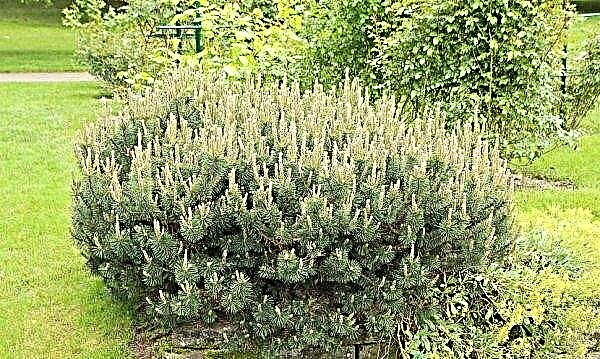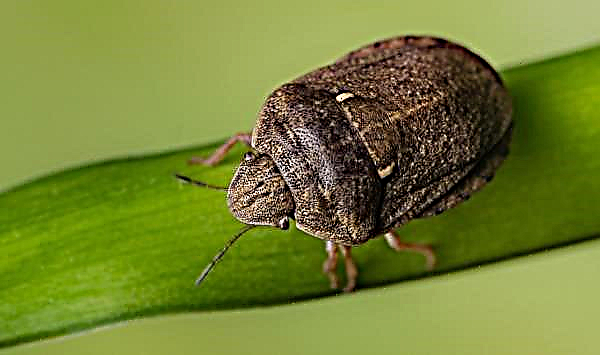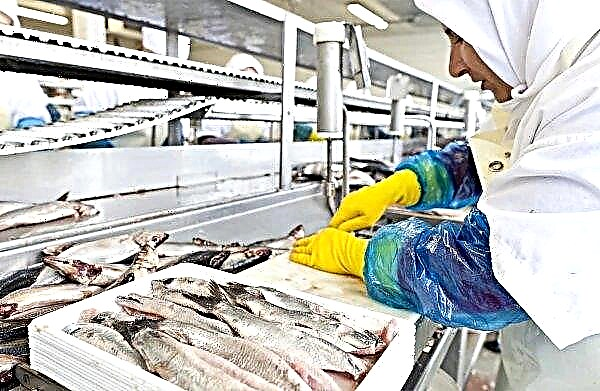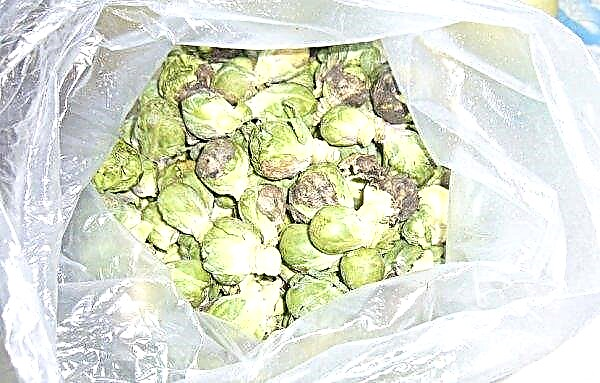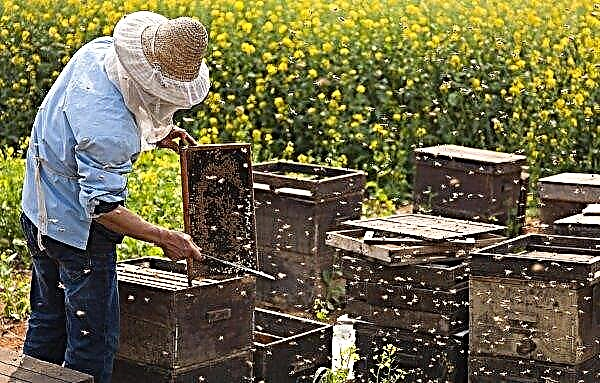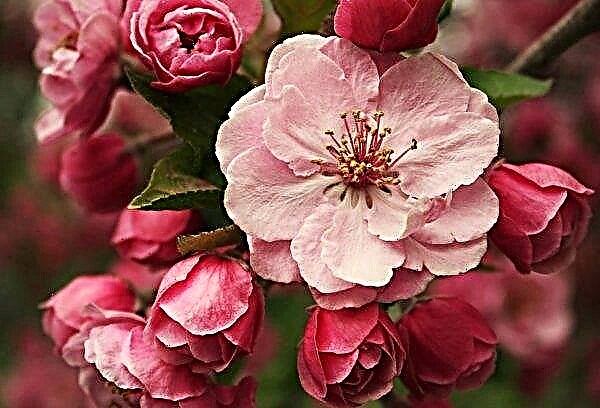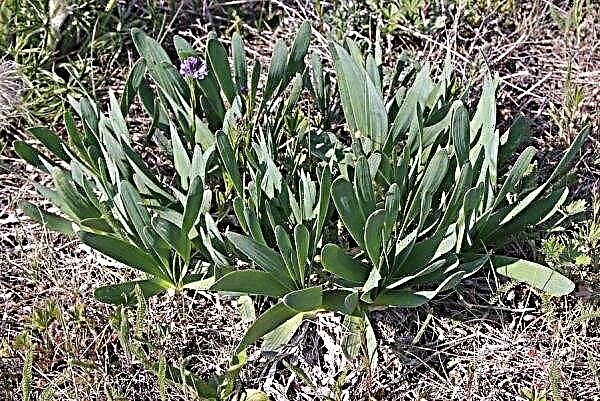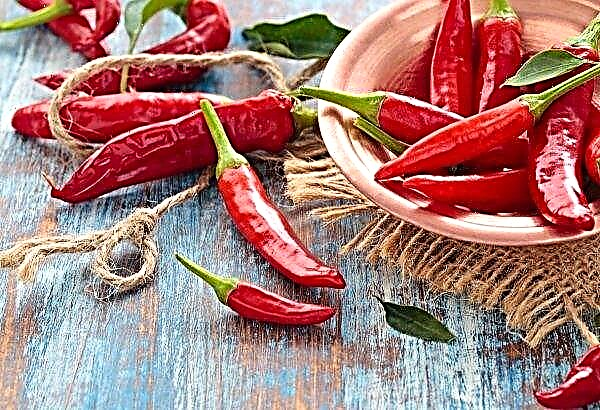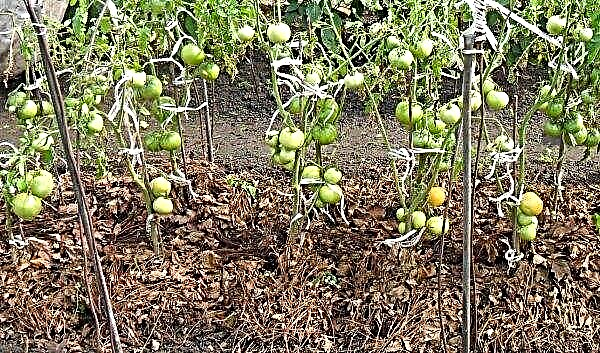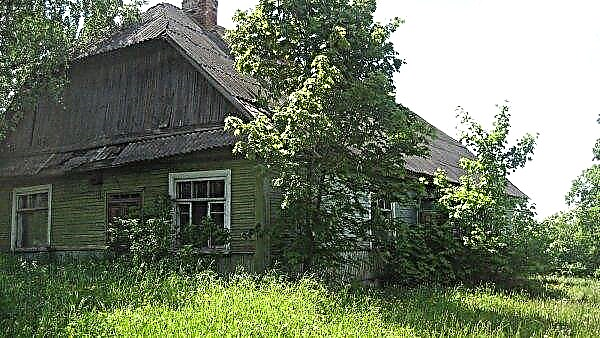Pear Forest beauty has been grown on personal plots for two centuries. A detailed description of the variety and the features of its agricultural technology are outlined below.
Breeding History and Variety Breeding Region
Varieties historically denote the homeland of the east of Flanders (Belgium), where at the beginning of the 19th century trees were noticed by a certain Chatillon. According to the information indicated in the Atlas of Fruits of 1906, the variety took shape after sowing the seeds by the Belgian Fario, and began to be distributed by Van Mons from 1810. In the varietal registers, duplicate names are indicated: Alexandrina, Oleiferous, Marie-Louise.
Description and characteristic
Forest beauty grows in Europe and Central Asia, in the North Caucasus. Characteristic features of the variety are described below.
Did you know? Belgian physicist, chemist and botanist Jean-Baptiste Van Mons (1765–1842) performed the first selection of a European pear and developed a technology for transporting seedlings over long distances. He bred over 40 different varieties that even reached America.
Tree description
Having a high growth rate, the tree reaches average size in the first decade of life and demonstrates such features:
- crown of a pyramidal shape;
- average foliage;
- leaves with a finely serrated margin and thin stalk;
- burgundy thick shoots, slightly curved or straight;
- the size of the lentils is small, the kidneys are not large;
- flowers are collected in small inflorescences of a soft pink hue.

Fruit Description
Fruits are formed mainly on the shoots of 3-4 years of life.
Pears usually grow to medium size with the following characteristics:
- the shape of the fetus is blunt-ovoid;
- the color at the beginning of removal is greenish yellow, then golden yellow with a blush, rusty spots and gray specks are possible;
- the skin is thin and dense, with a slight roughness;
- the stalk is short and straight;
- seeds are large, dark;
- average weight 120–140 g.

The fruits have a slightly yellowish juicy flesh, with a delicate, sour-sweet taste. The sugar content is 8.5%.
The timing of flowering and fruiting
Forest beauty belongs to the group of autumn varieties, the fruits of which are ready for harvest in late August or early September (depending on the region).
The start date of fruiting depends on the selected stock and is:
- 4-5 years on quince;
- 6-7 years old on a strong-growing stock;
- from 7 years on a wild pear.
Summer pear varieties bloom, depending on the region, from the beginning of April. Due to the properties of the variety, the tree tolerates return frosts during the opening of flowers. The variety is known for regular fruiting, but its quantity is variable. At the age of 12-15 years, the average indicators are 140-160 kg / ha. Productivity decreases in dry years.

Forest beauty - partially self-fertile tree. To increase productivity, Lemonka, Josephine Mechelnskaya and Williams are planted nearby. To maximize the flight of bees between the trees, they should be placed at a distance of no more than 10 m from each other. In areas with limited space, you can graft the pollinator in the crown of the main tree.
Grade stability
In terms of frost resistance, this pear is one of the first places in the Western European group and survives in winters with temperatures up to -45 ° C. Also, trees tolerate summer drought well. The variety is characterized by high susceptibility to scab.
Advantages and disadvantages of the variety
- Forest beauty is appreciated for such features:
- excellent taste;
- high yield
- unpretentiousness to the composition of the soil and growing conditions;
- high frost resistance.
- At the same time, the variety has significant disadvantages:
- strong scab exposure;
- crumbling fruit;
- short storage of fruits.
Agriculture planting pear seedlings Forest Beauty
The choice of high-quality planting material and a suitable place provide the necessary starting conditions for the further development of a healthy plant.
Timing and seat selection
For planting pears, choose the highest possible place on the site where the groundwater level does not rise above 1.5 m. The soil at the selected location should be loose and light, with a small clay content.

It is necessary to avoid lowlands and ravines in which cold air lingers for a long time, as well as places purged by strong winds. As neighbors, in addition to other varieties of pears, kindred apple trees are suitable. It is not recommended to put pear and mountain ash together, as they are subject to the same pests. You can plant a tree in spring or autumn.
- Autumn planting has the following advantages:
- seedlings will receive additional hardening and will easily tolerate possible spring frosts;
- more varieties on sale.
Important! A pear does not relate well to transplants, especially in adulthood, so the tree must be placed immediately in a permanent place!
Preparing the site and seedlings for planting
Weed and dig the landing site at the end of summer, and 2-3 weeks prior to planting, dig a hole about 50 cm deep and about 1 m wide.

The selected soil is mixed with peat and sand, and complex fertilizers are also added. Chalk, lime or dolomite flour must be added to acidic soil.
The best seedling to plant will have the following characteristics:
- age 1-2 years;
- wood without damage, elastic;
- branched root system;
- lack of signs of rot and stains.
The following preparatory measures are recommended the day before the landing:
- soak the seedling in water with mullein infusion;
- dip the roots into a thick mixture of clay and a heteroauxin solution;
- remove damaged roots and branches.
To reduce moisture consumption, some gardeners cut most of the branches.
The process of planting young seedlings
To plant a pear, you will need a wooden peg of suitable height and thickness.
Important! A few days after planting, the soil around the tree may settle and it is necessary to add soil to the trunk to avoid exposing the roots.
Algorithm of actions:
- Drive a peg into the center of the pit and sprinkle the earth around it with a cone.
- Place the seedling on the knoll, carefully spreading the roots. The trunk of the tree is located on the north side of the support.
- Press the roots to the ground so that there are no voids. When filling a seedling with earth, gently shake the seedling and pull it up a little.
- Tamp the soil after planting, making sure that the root neck is slightly above the soil level.
- Pour the tree with 2-3 buckets of water into the hole made around the trunk.
- Fill the trunk circle with peat or humus.
- Fix the sapling on the support with a rope.
 Pear planting pattern
Pear planting pattern
Forest Beauty Pear Care Rules
The forest beauty does not require special care, however, paying enough attention to the tree, you can get a much larger crop and extend its fruiting period.
Cropping and shaping the crown
Forest beauty is characterized by vertical growth, which must be restrained. The pear should be formed immediately after planting.
The main stages of pruning for a pear are as follows:
- annual seedlings are cut at a height of about 50 cm;
- in the second year, 4 skeletal branches are chosen at an angle of at least 45 ° and shortened by a quarter. The central conductor is left 20–25 cm higher. The remaining branches are weakened, deflecting horizontally with a garter to the pegs;
- each subsequent year, the skeletal branches are shortened by a quarter of the length.

When the annual growth does not exceed 20–30 cm and a large number of plaques appear, anti-aging pruning of up to 3-4 year old wood is necessary.
Pruning is performed before the onset of frost. The process requires thorough disinfection of the instrument to avoid the transfer of disease. Places of cut branches with a diameter of more than 1 cm must be treated with garden var.
Watering frequency
A young seedling needs watering every week, and for an adult tree there is usually enough natural rainfall.
It is necessary to ensure that the tree receives hydration in the following periods:
- at the end of flowering;
- completing the harvest;
- at the beginning of leaf fall.

Feeding scheme
Since the fruiting period begins after several years of vegetation, for the first 2-3 years the seedlings will have enough fertilizers placed in a pit.
Then, mineral supplements are added every year:
- nitrogen mixtures - in the spring;
- potassium phosphorus - in summer and autumn.
Prevention and protection against pests and diseases
The main problem of the variety is scab - a fungus that spends winter in fallen leaves. Its spores are carried by air during the opening of the kidneys. Scab is manifested by gray streaks on the back of the sheet plate, then the spots increase and dark-beige conidiospores form on them. A rainy summer leads to the rapid development of the disease, while in a drought progress slows down.

For the prevention of scab, it is necessary:
- destroy fallen leaves;
- crop affected shoots;
- treat trees with Bordeaux fluid.
Other possible pear diseases include:
- fruit rot which is manifested by brown spots on the fruits and softens them without causing subsidence. The fungus hibernates in the fruits remaining on the branches and in wet summer conditions can infect up to half of the total crop.
- rust forms thickenings on the cortex, which then become wounds. It spreads in early spring with a high level of humidity.
- in warm rainy weather develops and bacterial burnaffecting branches, flowers and leaves, as well as emerging fruits. A characteristic sign of the disease is blackening leaves, folding into a tube.
Did you know? In the Russian language of the XVII century, the pear was called "dule", borrowing this name from the Polish language.
Processing with special preparations (Chorus, Skor, etc.) can prevent the development of diseases and reduce its consequences.The most dangerous pear pests are the leaf moth and the pear moth. Insecticides used to control them should be used according to the instructions in order to avoid the effects of chemicals on human health.
Harvesting and storage
The average ripening term of the Forest Beauty is the end of August. It is important to have time to remove pears of this variety before full ripeness, otherwise the fruits quickly lose consumer qualities and are massively showered from branches. Therefore, harvesting is carried out about a week before full maturity. The fruits can be stored no longer than 2-3 weeks. In addition to fresh consumption, pears of this variety are suitable for baking and preservation.
 Variety Forest beauty is great for preparing various winter preparations
Variety Forest beauty is great for preparing various winter preparations
Forest beauty is a long-standing European variety, which has gained its distribution due to its unpretentiousness and long fruiting. It was used for breeding new varieties in different countries, improving disease resistance and fruit quality.

